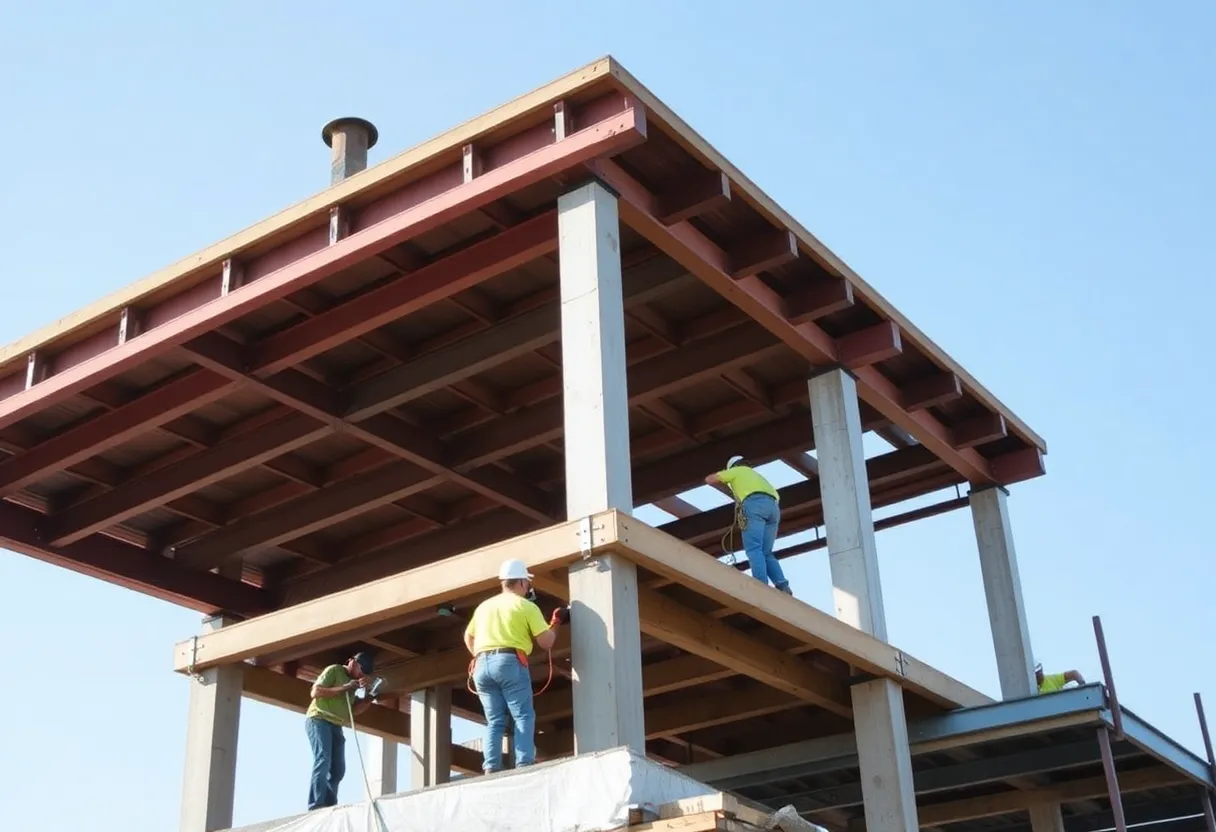News Summary
The UK construction sector is finding stability despite ongoing economic challenges and rising labor costs in 2025. With elevated material costs and a fluctuating tender price index, construction firms are encouraged to prioritize long-term planning. The regional disparities in construction activity reveal a stronger recovery in the South and Midlands compared to the North. Moreover, skills shortages are prompting the industry to adopt innovative practices. As sustainability becomes more critical, the sector aims to meet government housing targets through new construction methods and planning strategies.
UK Construction Sector Outlook 2025: Stabilization Amidst Economic Challenges and Labour Constraints
The UK construction sector is navigating a complex environment in 2025, showcasing both signs of stabilization and persistent cost constraints affecting the industry. As fluctuating material costs and rising labour expenses emerge as driving factors, construction firms are urged to adopt longer-term capital planning to effectively mitigate risks associated with their projects.
Material Costs and Tender Price Index Trends
Material costs, which had seen significant fluctuations over the past few years, began to stabilize in 2023-2024. However, these costs remain notably high due to ongoing inflationary pressures. The troubled trajectory of the tender price index (TPI) reflects this reality as it has consistently risen since 2019, influenced by these persistent inflation rates. In line with JLL’s forecasts, the TPI is anticipated to rise by approximately 2.5% in 2025, followed by a 3.0% increase in 2026.
Labour Market Constraints and Rising Costs
Another critical aspect impacting the UK’s construction market is the labour market constraints. Labour costs are on the rise, driven largely by recent government policy changes linked to National Insurance Contributions and wage increases. Even though there have been year-on-year reductions in construction firm insolvencies, concerns linger due to earlier price hikes and commitments made before the pandemic struck.
Regional Differences in Construction Activity
The economic activity in the UK construction sector reached about £160 billion in 2024. The residential sector notably accounted for 55% of this total, indicating a strong demand for housing. However, the recovery of regional construction activity varies significantly. The South and Midlands regions are experiencing a stronger rebound compared to the North, which has faced challenges in returning to normal levels of warehouse construction in the post-pandemic environment. There is optimism that investment from government spending reviews focused on the residential and industrial sectors will positively impact the North of England.
Shifts in Demand and Sustainability Trends
In urban centres like Manchester, Birmingham, and Leeds, demand for high-quality office spaces is on the rise. Conversely, the London market faces supply constraints that may drive a shift towards retrofitting existing buildings. With economic uncertainties and fluctuations in supply chains, effective project planning and cost management have become essential for navigating potential risks and ensuring project viability.
Addressing Skills Shortages
Amid the challenges, the UK construction industry is finding ways to adapt to prevailing skills shortages. Rising wages, coupled with advancements in technology, have seen a gradual shift towards the use of artificial intelligence and innovative construction methods, such as modular construction, to cope with labour availability. These initiatives aim to bolster workforce efficiency and enhance overall productivity within the sector.
Ongoing Threats and Future Outlook
Despite various measures, the industry faces ongoing threats including geopolitical events and global economic uncertainties that may continue to influence construction material costs in the foreseeable future. Additionally, an alarming issue affecting contractors is the rise in small tool theft, with an estimated loss of £98 million annually, further complicating operational challenges.
Sustainable Construction Practices
With a growing emphasis on sustainable practices, the adoption of modern methods of construction (MMC) is viewed as integral to meeting government housing targets. Looking forward, the UK construction output is projected to rise by around 2.5% in 2025, with a potential growth of 3.8% in 2026 according to forecasts by the Construction Product Association.
The Importance of Risk Navigation
As the UK construction industry continues to evolve, the ability to navigate the shifting risk landscape will be paramount for firms aiming for success in the years ahead. Adopting proactive strategies for managing costs, effective planning, and fostering innovation will be essential in overcoming challenges and maintaining a healthy construction market.
Deeper Dive: News & Info About This Topic
Additional Resources
- JLL: UK Construction Perspective 2025
- Arcadis: Summer 2025 UK Construction Market View Report
- Munich Re: 2025 UK Construction Trends Report
- HSF Kramer: Disputes Yearbook 2024 – Construction Disputes
- JLL: UK Construction Market View H1 2025
- Wikipedia: Construction
- Google Search: UK construction trends
- Google Scholar: UK construction 2025
- Encyclopedia Britannica: Construction industry
- Google News: UK construction
Author: Construction FL News
The FLORIDA STAFF WRITER represents the experienced team at constructionflnews.com, your go-to source for actionable local news and information in Florida and beyond. Specializing in "news you can use," we cover essential topics like product reviews for personal and business needs, local business directories, politics, real estate trends, neighborhood insights, and state news affecting the area—with deep expertise drawn from years of dedicated reporting and strong community input, including local press releases and business updates. We deliver top reporting on high-value events such as the Florida Build Expo, major infrastructure projects, and advancements in construction technology showcases. Our coverage extends to key organizations like the Associated Builders and Contractors of Florida and the Florida Home Builders Association, plus leading businesses in construction and legal services that power the local economy such as CMiC Global and Shutts & Bowen LLP. As part of the broader network, including constructioncanews.com, constructionnynews.com, and constructiontxnews.com, we provide comprehensive, credible insights into the dynamic construction landscape across multiple states.





